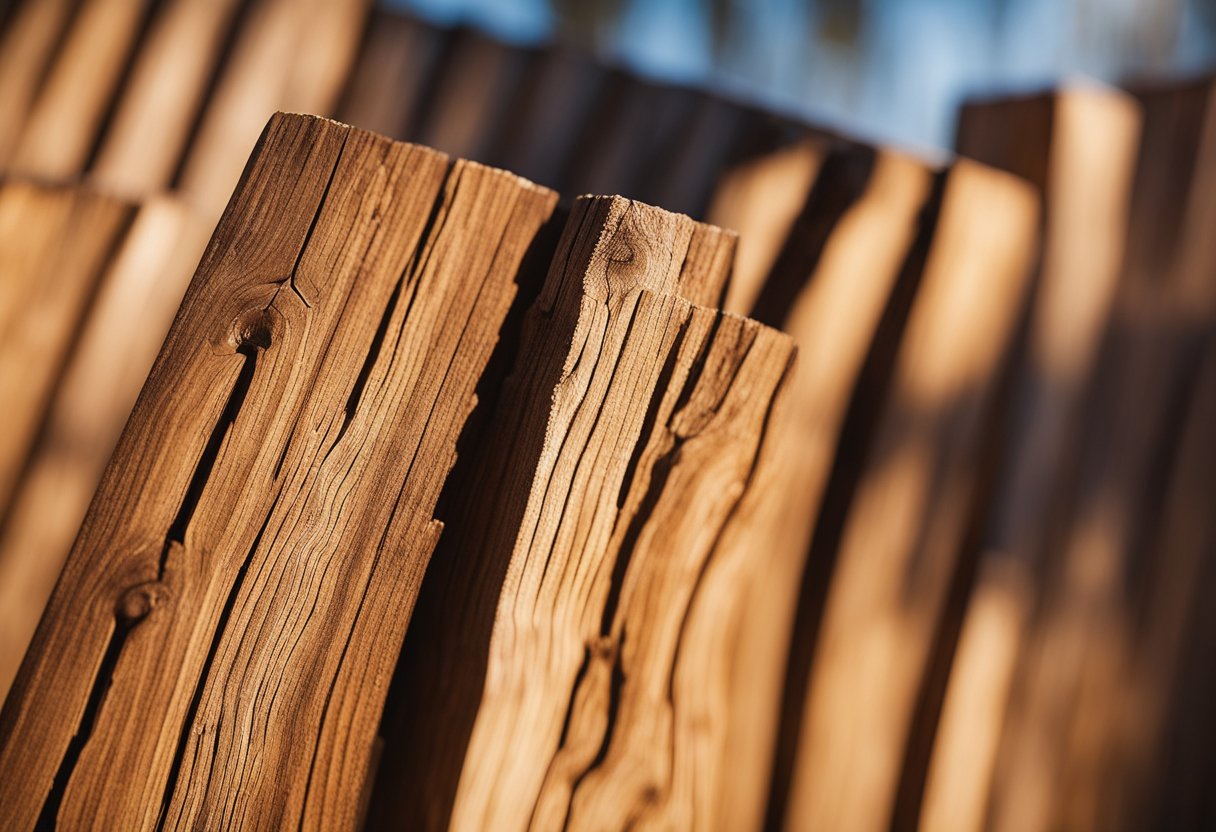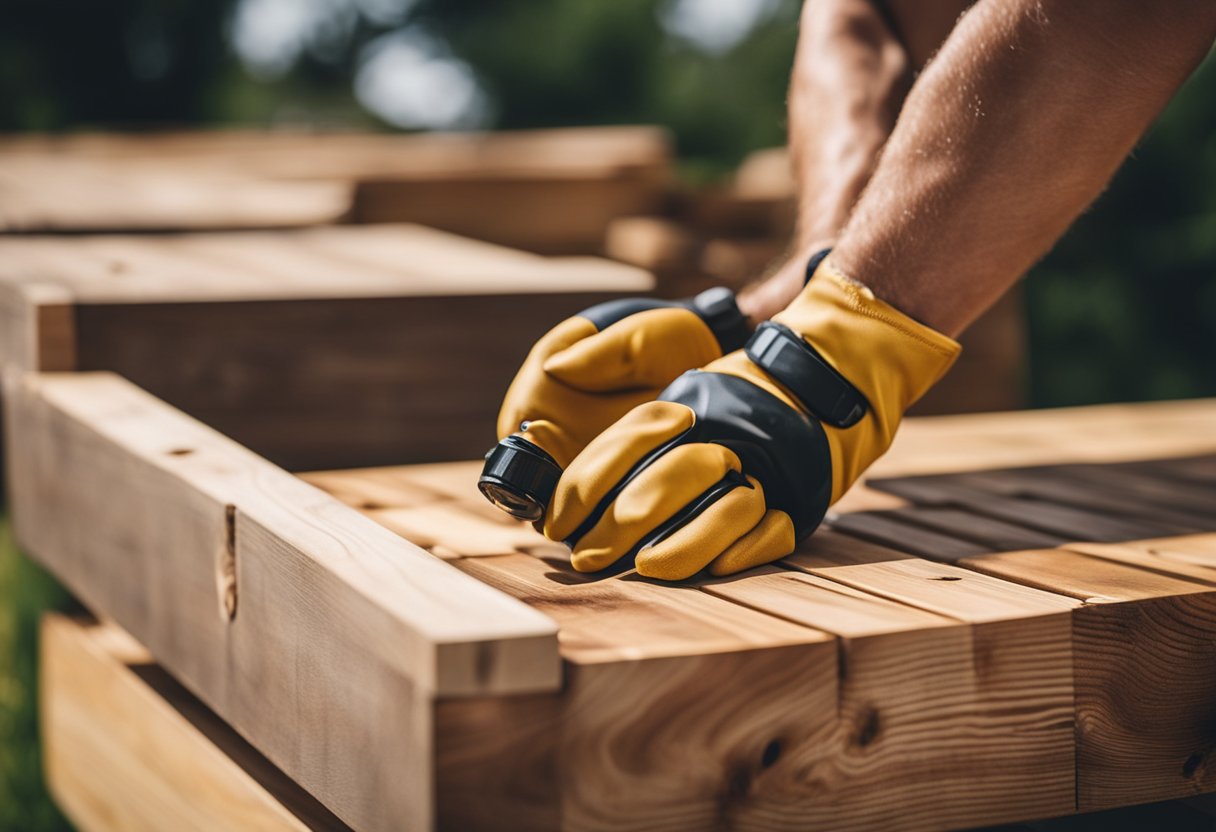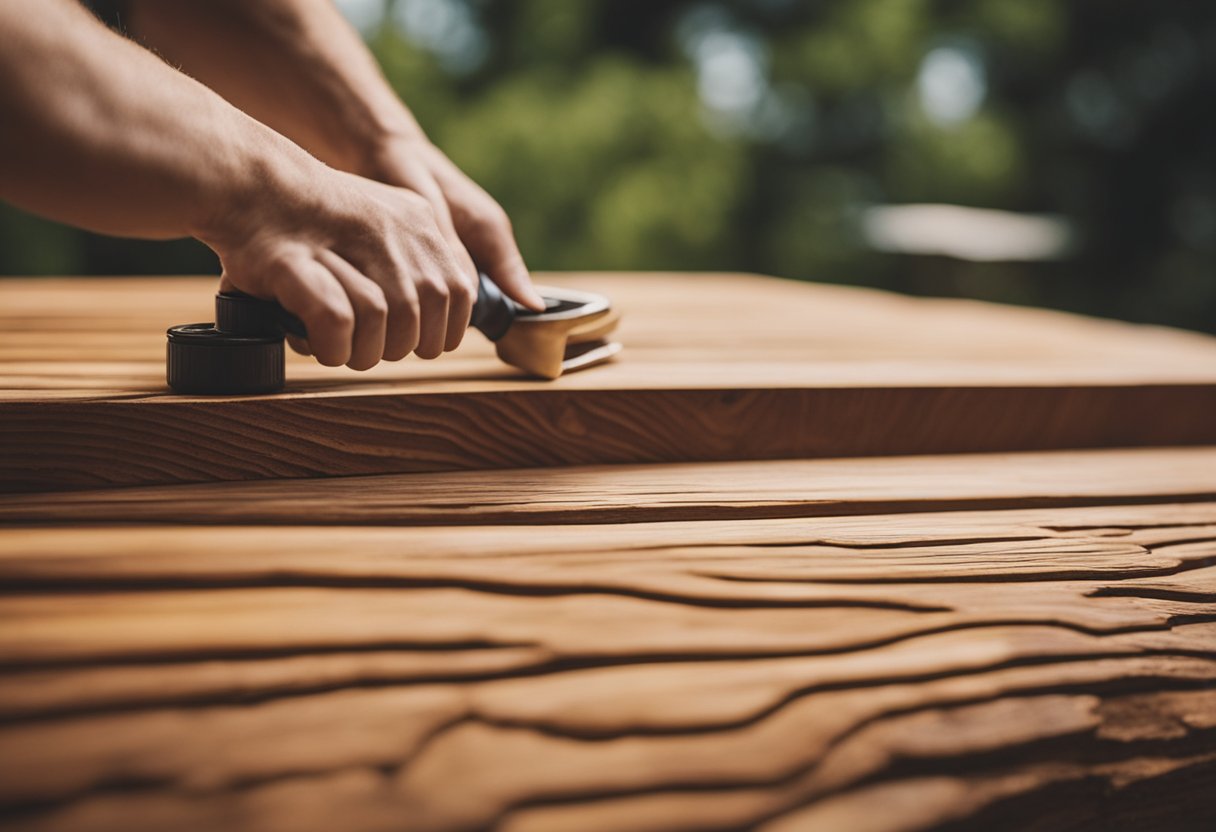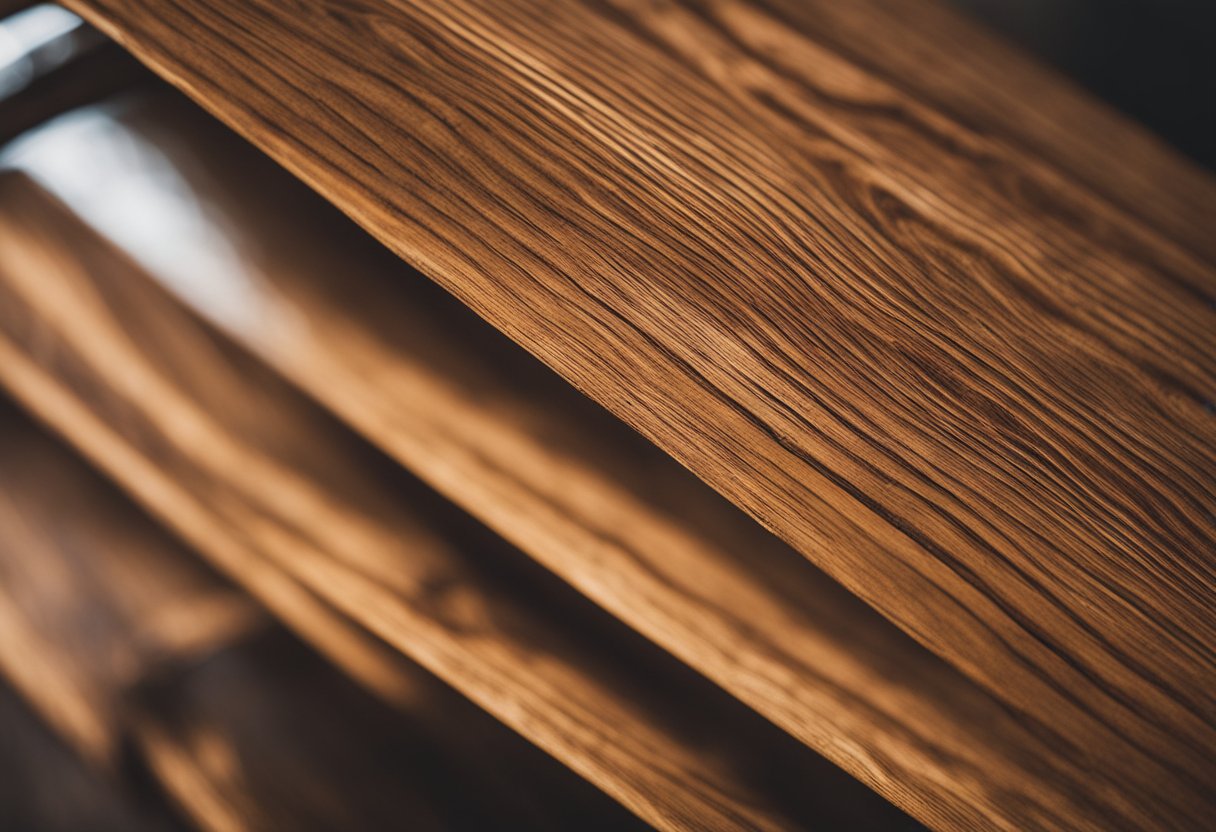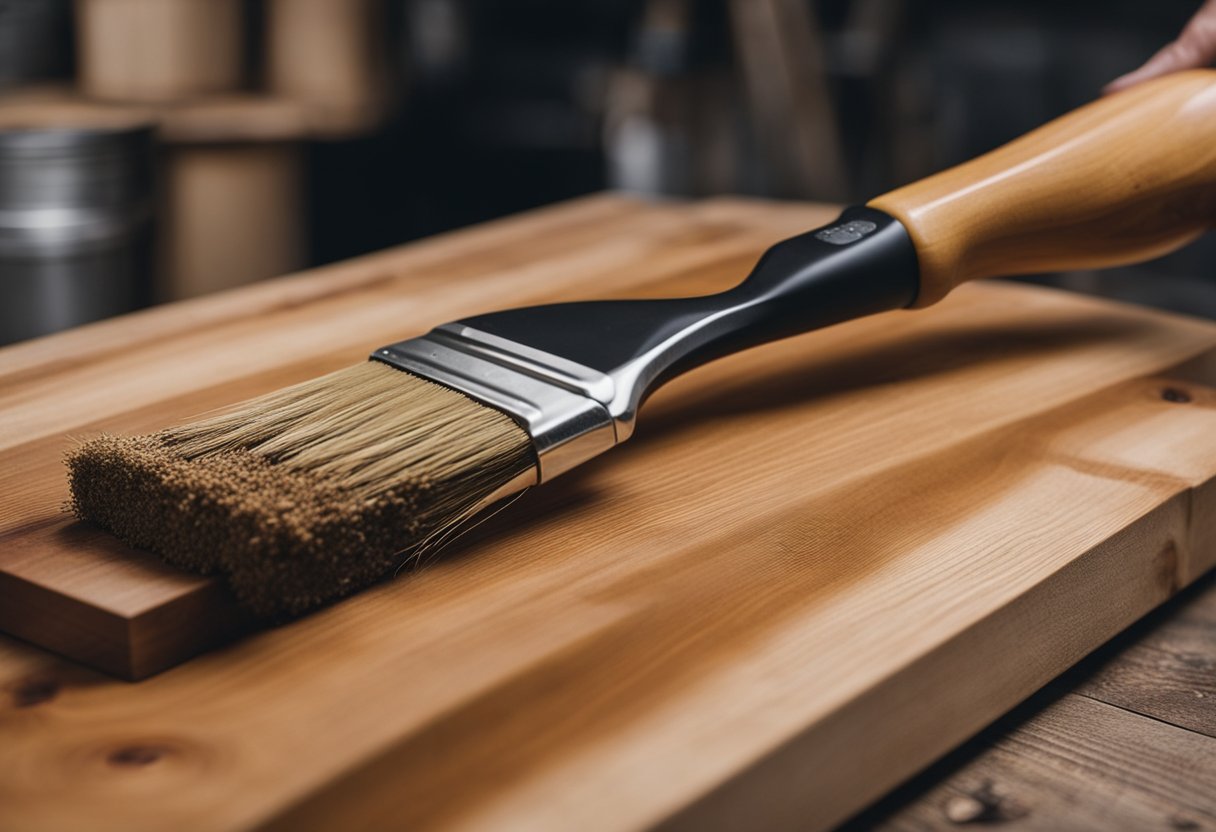I have been working with wood for many years, and one of my favorite finishes is Danish oil. Danish oil is a type of wood finish that is made from a mixture of oil and varnish. It is a popular choice for finishing cedar because it soaks in deeper than other finishes, providing excellent protection against moisture and wear.
Cedar is a popular wood choice for many projects, including outdoor furniture, decks, and fences. Cedar is naturally resistant to rot and decay, but it still requires protection from the elements to maintain its beauty and longevity. Danish oil is an excellent choice for finishing cedar because it enhances the wood’s natural color and grain pattern while providing superior protection against moisture and wear.
Key Takeaways
- Danish oil is a popular wood finish that is made from a mixture of oil and varnish.
- Cedar is a popular wood choice for outdoor projects because of its natural resistance to rot and decay.
- Danish oil is an excellent choice for finishing cedar because it enhances the wood’s natural beauty while providing superior protection against moisture and wear.
Understanding Danish Oil
https://www.youtube.com/watch?v=BBs7aj8FUpM&embed=true
As a woodworker, I have found Danish oil to be an excellent choice for finishing my cedar projects. Danish oil is a type of natural oil that is made from a blend of linseed oil and tung oil, along with other additives. It is a popular choice among woodworkers because it provides a beautiful and durable finish that enhances the natural beauty of the wood.
One of the benefits of Danish oil is that it is very easy to apply. It can be applied with a brush, rag, or even sprayed on. It is also very forgiving, which means that mistakes can be easily corrected. This makes it an ideal choice for beginners who are just starting out with woodworking.
Danish oil is also very versatile. It can be used on a variety of wood types, including cedar. It is also available in a range of finishes, from matte to high gloss. This makes it easy to find the perfect finish for your project.
Another advantage of Danish oil is that it is a natural oil, which means that it is environmentally friendly. It is made from natural ingredients, such as linseed oil and tung oil, which are derived from the seeds of the flax plant and the nuts of the tung tree, respectively. This makes it a great choice for those who are concerned about the environment.
Danish oil can also be mixed with varnish to create an oil and varnish blend. This blend provides the durability of varnish with the ease of application of oil. It is also available in a range of solvents, including mineral spirits and turpentine. This makes it easy to find the perfect solvent for your project.
In summary, Danish oil is a versatile, easy-to-apply, and environmentally friendly finish that is an excellent choice for cedar and other wood types. Its natural ingredients and range of finishes make it a great choice for woodworkers of all skill levels.
Benefits of Danish Oil on Cedar
https://www.youtube.com/watch?v=5WATXUdD1g8&embed=true
As a woodworker, I have found that using Danish oil on cedar has several benefits. Here are some of them:
1. Enhances Natural Beauty
Cedar has a beautiful natural grain pattern that can be enhanced by using Danish oil. This oil penetrates deep into the wood, bringing out its natural beauty and giving it a warm glow. The oil also helps to bring out the color of the wood, making it look richer and more vibrant.
2. Provides Protection
Danish oil provides a durable finish that protects cedar from moisture, UV rays, and other environmental factors that can damage the wood. This finish helps to prevent the wood from cracking, splitting, or warping over time, making it a great choice for outdoor furniture or other projects that will be exposed to the elements.
3. Non-Toxic
Danish oil is a non-toxic finish that is safe for use on cedar. Unlike some other finishes, it does not emit harmful fumes or require special ventilation during application. This makes it a great choice for indoor projects or for those who are concerned about the health and safety of their families.
4. Versatile
Danish oil is a versatile finish that can be used on a variety of wood types, including cedar. This makes it a great choice for woodworkers and furniture enthusiasts who want a durable finish that can be used on multiple projects.
Overall, using Danish oil on cedar can significantly enhance the wood’s natural beauty and lifespan. While it may not be as durable as some other finishes, it provides a great balance between protection and natural beauty.
Preparation for Applying Danish Oil
Before applying Danish oil to cedar, it is essential to prepare the wood surface properly. The preparation process ensures that the oil adheres to the wood surface and provides a smooth finish. Here are the steps I follow to prepare cedar for Danish oil application:
Sanding
I start by sanding the cedar with medium-grit sandpaper. Sanding helps to create a smooth surface for the oil to adhere to. It also removes any rough spots, scratches, or dents on the wood surface. After sanding, I wipe the wood surface with a tack cloth to remove any sanding dust.
Bare Wood
It is best to apply Danish oil to bare wood. If there is any existing finish on the wood surface, it is essential to remove it before applying Danish oil. Sanding the wood surface with fine-grit sandpaper can remove the existing finish.
Tack Cloth
After sanding, I use a tack cloth to remove any remaining sanding dust. A tack cloth is a sticky cloth that picks up dust and debris from the wood surface. It is essential to use a tack cloth before applying Danish oil to ensure a smooth finish.
Conclusion
Proper preparation is key to achieving a smooth and even finish when applying Danish oil to cedar. Sanding the wood surface, using a tack cloth to remove dust, and ensuring the wood is bare are essential steps to prepare cedar for Danish oil application.
Application Process of Danish Oil
https://www.youtube.com/watch?v=fUyfCtf-bhs&embed=true
When it comes to applying Danish oil to cedar, there are a few things to keep in mind to ensure the best results. Here’s a breakdown of the application process:
1. Preparation
Before applying any Danish oil to your cedar, it’s essential to make sure the wood is clean and free of any dirt or debris. Start by sanding the surface with medium-grit sandpaper to create a smooth surface for the oil to adhere to. After sanding, use a tack cloth or a similar product to remove any dust or debris that could prevent the oil from penetrating the wood.
2. Application
There are several ways to apply Danish oil to cedar, but the most common method is to use a brush or a rag. Danish oil is easy to apply, and it penetrates the wood quickly, so you don’t need to worry about applying too much. Start by applying a thin coat of Danish oil to the cedar, making sure to cover the entire surface evenly. Allow the oil to penetrate the wood for about 15 minutes before wiping away any excess with a clean rag.
3. Second Coat
After the first coat has dried, you can apply a second coat of Danish oil to the cedar if desired. This will help to deepen the color and provide additional protection to the wood. Follow the same application process as the first coat, making sure to wipe away any excess oil with a clean rag.
4. Sealed Wood
If the cedar has been previously sealed, it’s essential to remove the old finish before applying Danish oil. Sand the surface to remove any existing finish, then follow the same application process as described above.
Overall, applying Danish oil to cedar is a straightforward process that can be done by anyone. With a little bit of preparation and the right tools, you can enhance the natural beauty of your cedar while providing it with long-lasting protection.
Maintenance and Care
https://www.youtube.com/watch?v=vxmpoImHJCA&embed=true
As someone who has worked with Danish oil on cedar, I know that maintaining and caring for the wood is essential to ensure its longevity and beauty. Regular maintenance is key to keeping the wood looking great and protecting it from the elements.
One of the most important things to keep in mind is to avoid using harsh chemicals or abrasive materials on the wood. Instead, use a soft cloth or brush to remove any dirt or debris. If the wood is especially dirty, you can use a mild soap and water solution to clean it.
Another important aspect of maintenance is to keep the wood well-oiled. Danish oil is a great choice for cedar because it penetrates deeply into the wood, providing long-lasting protection. However, over time, the oil will wear away, and the wood will need to be re-oiled. I recommend reapplying Danish oil every 6-12 months, depending on how much wear and tear the wood receives.
If the wood has become damaged or worn over time, it may be necessary to refinish it. Refinishing involves sanding down the old finish and applying a new coat of oil. This process can be time-consuming, but it’s worth it to restore the wood’s natural beauty.
In conclusion, maintaining and caring for cedar wood finished with Danish oil is essential to ensure its longevity and beauty. Regular maintenance, reapplication of oil, and refinishing when necessary will keep your cedar looking great for years to come.
Danish Oil Versus Other Finishes
https://www.youtube.com/watch?v=G6nmgDRw3zU&embed=true
When it comes to finishing cedar wood, there are several options available, each with its own advantages and disadvantages. Danish oil is just one of many finishes that can be used.
Danish Oil
Danish oil is a popular choice for finishing cedar wood because it is easy to apply and provides a durable finish. It is a blend of oil and varnish, which means it penetrates the wood and provides protection from the inside out. Danish oil is also waterproof, which makes it a good choice for outdoor use.
Polyurethane
Polyurethane is a synthetic finish that provides a hard, durable surface. It comes in both water-based and oil-based formulas, and can be applied with a brush, roller, or sprayer. Polyurethane is an excellent choice for high traffic areas, such as floors, but it can be difficult to apply evenly.
Lacquer
Lacquer is a fast-drying finish that provides a hard, durable surface. It is available in both spray and brush-on formulas, and can be used on a variety of surfaces, including wood, metal, and plastic. Lacquer is a good choice for furniture and other decorative items, but it can be difficult to repair if it becomes damaged.
Mineral Oil
Mineral oil is a non-drying oil that is often used as a cutting board finish. It is food safe and easy to apply, but it does not provide much protection against water or other liquids.
Teak Oil
Teak oil is a blend of oil and varnish that is often used on outdoor furniture. It provides a durable finish that is resistant to water and other liquids, but it can be difficult to apply evenly.
Boiled Linseed Oil
Boiled linseed oil is a natural oil finish that is often used on wood furniture. It provides a durable finish that is resistant to water and other liquids, but it can take a long time to dry.
Oil Finishes
Oil finishes, such as tung oil and walnut oil, are natural finishes that penetrate the wood and provide a durable finish. They are easy to apply and provide a natural look, but they do not provide as much protection as other finishes.
Primer
Primer is a preparatory coat that is applied to wood before painting or staining. It helps to seal the wood and provide a smooth surface for the finish coat. Primer is an important step in the finishing process, but it is not a finish in itself.
In conclusion, there are many finishes available for cedar wood, each with its own advantages and disadvantages. Danish oil is a popular choice because it is easy to apply and provides a durable finish, but it is not the only option available. When choosing a finish, it is important to consider the intended use of the item, as well as the desired look and level of protection.
Safety and Precautions
When working with Danish oil on cedar, it is important to take certain safety precautions to ensure that the process goes smoothly and safely. Danish oil is generally considered to be non-toxic and safe to use, but it is still important to take certain precautions to avoid any potential hazards.
Firstly, it is important to make sure that the area where you will be working is well-ventilated. This will help to prevent any fumes from building up and causing potential health hazards. It is also important to wear gloves and protective eyewear to avoid any contact with the oil.
When it comes to chemical resistance, Danish oil is generally resistant to most chemicals, making it a good choice for outdoor projects. However, it is important to note that it is not completely resistant to all chemicals, so it is important to take care when working with any potentially harmful substances.
In terms of food safety, it is important to note that not all Danish oils are food safe. If you plan on using your cedar project for food-related purposes, it is important to choose a Danish oil that is specifically labeled as food safe. Mineral spirits can be used to thin Danish oil, but it is important to handle them with care and avoid any contact with skin or eyes.
Overall, while Danish oil is generally considered to be safe and easy to use, it is important to take certain precautions to ensure that the process goes smoothly and safely. By following these simple guidelines, you can ensure that your cedar project is both beautiful and safe for use.
Common Uses of Danish Oil on Cedar
As a woodworking enthusiast, I have found that Danish oil is a versatile product that can be used on various wood types, including cedar. Danish oil is a popular choice among woodworkers as it enhances the natural beauty of the wood while providing protection against moisture and wear.
Here are some common uses of Danish oil on cedar:
Furniture
Danish oil is an excellent choice for finishing cedar furniture. It brings out the natural color and grain of the wood, giving it a warm and inviting look. It also provides a durable finish that can withstand daily use. Whether you are making a cedar coffee table, a bed frame, or a bookshelf, Danish oil can help you achieve a beautiful and long-lasting finish.
Outdoor Furniture
Cedar is a popular choice for outdoor furniture as it is naturally resistant to rot and insects. However, exposure to the elements can cause the wood to fade and lose its luster over time. Danish oil can help protect cedar outdoor furniture from moisture and UV damage while enhancing its natural beauty. It is important to note that Danish oil is not a permanent solution and will need to be reapplied periodically.
Cutting Boards
Cedar is a popular choice for cutting boards as it is naturally antimicrobial and has a pleasant aroma. However, untreated cedar can absorb moisture and bacteria, making it less hygienic over time. Danish oil can help seal the wood and prevent it from absorbing moisture and bacteria, making it a great choice for cutting boards.
Woodworking Projects
Danish oil is a popular choice for finishing woodworking projects as it is easy to apply and provides a durable finish. It can be used on a variety of wood types, including cedar, making it a versatile choice for woodworkers. Whether you are making a jewelry box, a picture frame, or a chessboard, Danish oil can help you achieve a beautiful and long-lasting finish.
Cabinetry
Cedar is a popular choice for cabinetry as it is lightweight, durable, and has a unique grain pattern. Danish oil can help bring out the natural beauty of the wood while providing a protective finish. It is important to note that Danish oil is not a stain and will not significantly darken the wood.
Carving
Cedar is a popular choice for carving as it is soft and easy to work with. Danish oil can help protect carved cedar pieces from moisture and wear while enhancing their natural beauty. It is important to note that Danish oil is not a permanent solution and will need to be reapplied periodically.
In summary, Danish oil is a versatile product that can be used on various wood types, including cedar. It enhances the natural beauty of the wood while providing protection against moisture and wear. Whether you are making furniture, cutting boards, or carving, Danish oil can help you achieve a beautiful and long-lasting finish.
Effect of Danish Oil on Cedar Longevity
As a woodworker, I have found that Danish oil is a popular choice for finishing cedar furniture. One of the main benefits of using Danish oil on cedar is that it can significantly enhance the wood’s lifespan and appearance.
Cedar is a type of wood that is naturally resistant to rot and decay. However, it is still susceptible to water damage and can be affected by UV rays and other elements. When exposed to moisture, cedar can soak, rot, or crack. This leaves room for bacteria, mold, and fungi to grow. Danish oil can help protect cedar from these issues by making it more water-resistant.
Danish oil is also heat and stain-resistant, which means that it can help protect cedar from damage caused by spills, scratches, and other types of wear and tear. Additionally, Danish oil is easy to apply and can be used on various wood types, including cedar, making it a versatile choice for woodworkers and furniture enthusiasts.
It is important to note that applying Danish oil to cedar can be time-consuming, as it requires multiple coats and drying time between each coat. However, the end result is a beautiful, durable finish that can help protect your cedar furniture for years to come.
Overall, I have found that using Danish oil on cedar can be a great way to enhance the wood’s natural beauty while also protecting it from the elements. By making cedar more water-resistant, heat-resistant, and stain-resistant, Danish oil can help extend the lifespan of your cedar furniture and keep it looking great for years to come.
Frequently Asked Questions
What is the best thing to put on cedar wood?
Cedar wood is naturally resistant to decay and insects, but it can still benefit from a protective finish. The best finish for cedar wood depends on the intended use of the item. For outdoor furniture and structures, a clear penetrating oil like Danish Oil is a good choice. For indoor furniture, a clear lacquer or polyurethane finish can provide a durable and protective coating.
What’s the best finish for cedar?
The best finish for cedar depends on the intended use of the item. For outdoor furniture and structures, a clear penetrating oil like Danish Oil is a good choice. For indoor furniture, a clear lacquer or polyurethane finish can provide a durable and protective coating. Other options for indoor furniture include wax or oil finishes.
What is the best way to seal cedar wood?
Cedar wood does not need to be sealed, but it can benefit from a protective finish. The best way to apply a protective finish to cedar wood is to first sand the wood to create a smooth surface. Next, apply the finish with a brush or cloth, following the manufacturer’s instructions. Allow the finish to dry completely before using the item.
Should I oil cedar wood?
Cedar wood does not need to be oiled, but it can benefit from a protective finish. A clear penetrating oil like Danish Oil can provide a protective coating that enhances the natural beauty of the wood.
What is the best oil to use on cedar?
The best oil to use on cedar is a clear penetrating oil like Danish Oil. This type of oil penetrates the wood fibers to provide a protective coating that enhances the natural beauty of the wood.
What is the best natural finish for cedar?
A clear penetrating oil like Danish Oil is a good natural finish for cedar. This type of oil penetrates the wood fibers to provide a protective coating that enhances the natural beauty of the wood. Other natural finishes for cedar include wax or oil finishes.

Hi, I’m Sal Muller of Tooltrip.com. My DIY experience led me to understand essential power tools for home projects. Tooltrip.com guides enthusiasts and professionals in choosing right tools for any job. I provide concise top tool reviews for easier, efficient DIY.

